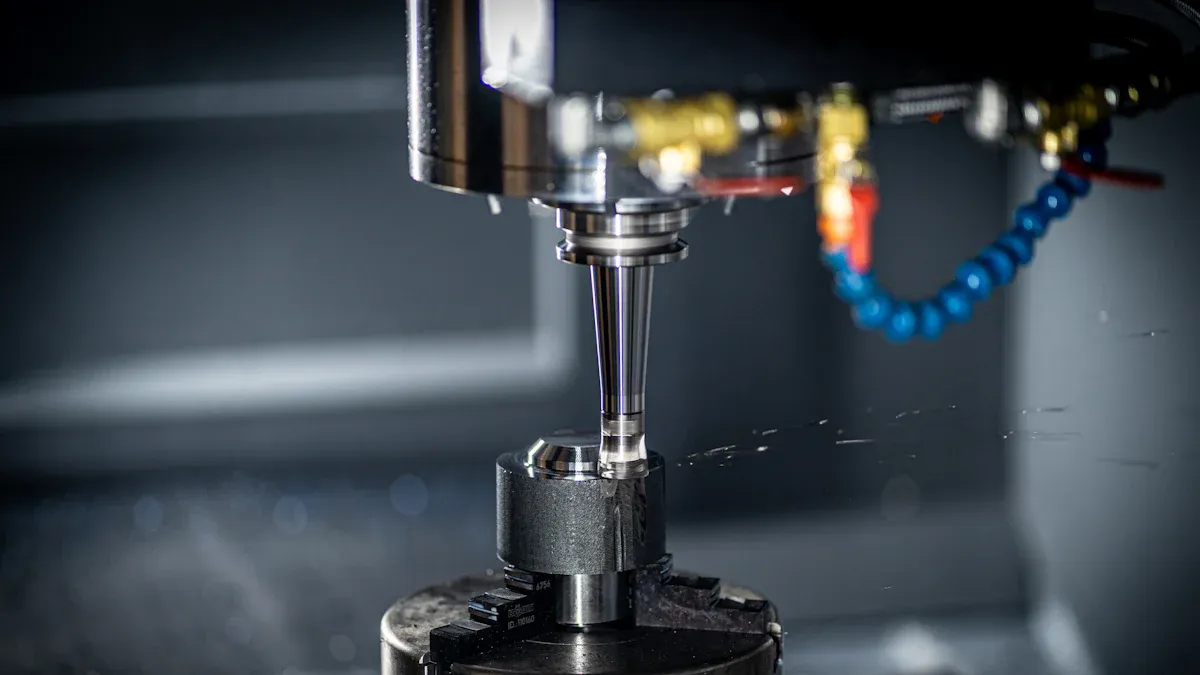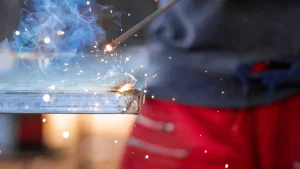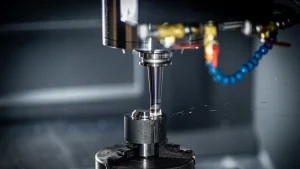
Graphite molds are essential in semiconductor manufacturing, providing precision and efficiency in high-temperature processes. The growing demand for advanced molds in the semiconductor industry, driven by innovations such as 5G and IoT, has highlighted the importance of graphite mold solutions. With the use of silicon carbide molds, melting silicon moulds, and sic moulds, manufacturers can achieve exceptional results, overcoming challenges in intricate geometries and large-scale production.
Key Takeaways
- Graphite molds are important for making semiconductors. They are strong and conduct heat well, helping factories work faster.
- New materials and better tools make molds work better. This helps create detailed and accurate semiconductor parts.
- Eco-friendly methods like recycling and saving energy help lower the harm semiconductor factories cause to the environment.
The Role of Graphite Mold in Semiconductor Manufacturing
Applications in High-Temperature Semiconductor Processes
Graphite molds play a vital role in high-temperature semiconductor processes due to their exceptional thermal properties. Recent advancements in material science have introduced high-purity graphite and composite materials, which offer superior thermal conductivity and mechanical strength. These materials can endure extreme temperatures without compromising structural integrity, enabling faster production cycles. Studies reveal that advanced graphite materials can boost production rates by up to 30%, making them indispensable for high-volume manufacturing.
In semiconductor operations, graphite molds are widely used in chip dicing and packaging processes. As cutting tools, they ensure precise cuts while minimizing damage to delicate chips. Additionally, their high thermal conductivity and low thermal expansion coefficient maintain stability during chip packaging, ensuring consistent performance. These applications highlight the critical role of graphite molds in enhancing efficiency and precision in semiconductor manufacturing.
Advantages of Graphite Mold for Precision and Longevity
Graphite molds offer several advantages that make them ideal for semiconductor production. Their ability to withstand high temperatures ensures reliability in demanding environments. Furthermore, their non-reactive nature with molten materials preserves the integrity of intricate components. This combination of properties makes graphite molds essential for producing high-precision semiconductor devices.
Continuous advancements in graphite mold design have further enhanced their performance. Modern molds exhibit higher thermal conductivity, improved corrosion resistance, and greater wear resistance. These features contribute to their longevity, reducing the need for frequent replacements and lowering operational costs. By meeting the high precision and efficiency demands of semiconductor manufacturing, graphite molds remain a cornerstone of the industry.
Challenges in Traditional Graphite Mold Design
Limitations in Material Durability and Performance
Traditional graphite molds face significant challenges in durability and performance. Their inherent brittleness often results in wear and tear, especially in high-stress manufacturing environments. This brittleness limits their lifespan, requiring frequent replacements and increasing operational costs. Additionally, fluctuations in raw material prices, driven by geopolitical tensions and supply chain disruptions, complicate the production of consistent, high-quality molds. These limitations hinder the ability of traditional molds to meet the rigorous demands of modern semiconductor manufacturing.
Issues with Precision in Complex Mold Geometries
Achieving precision in complex mold geometries remains a persistent challenge. Traditional graphite molds often struggle to maintain dimensional accuracy when producing intricate or miniature components. This issue arises from limitations in machining techniques and the material’s susceptibility to micro-cracking during processing. As semiconductor devices become smaller and more complex, the inability to produce precise molds can lead to defects, reducing overall production efficiency. Manufacturers must address these precision challenges to meet the industry’s evolving requirements.
High Costs of Production and Maintenance
The production and maintenance of traditional graphite molds involve high costs. The labor-intensive manufacturing process, combined with the need for specialized equipment, drives up production expenses. Furthermore, the frequent replacement of molds due to wear and tear adds to maintenance costs. These financial burdens can strain manufacturers, particularly those operating in competitive markets. Reducing these costs is essential for improving the scalability and sustainability of semiconductor manufacturing.
Key Innovations in Graphite Mold Design

Advanced Graphite Materials for Improved Thermal Conductivity
Innovations in material science have led to the development of advanced graphite materials with enhanced thermal conductivity. These materials distribute heat more evenly, reducing the risk of thermal stress during semiconductor manufacturing. High-purity graphite and composite blends now offer improved mechanical strength, enabling molds to withstand extreme temperatures without degradation. This advancement ensures consistent performance and extends the lifespan of the graphite mold, making it a reliable choice for high-precision applications.
Precision Machining for Complex and Miniature Components
Modern machining techniques have revolutionized the production of intricate and miniature components. Advanced CNC (Computer Numerical Control) systems enable manufacturers to achieve unparalleled precision in graphite mold design. These systems reduce errors and ensure dimensional accuracy, even for the most complex geometries. This level of precision supports the production of cutting-edge semiconductor devices, meeting the industry’s demand for smaller and more efficient components.
Digital Simulation Tools for Design Optimization
Digital simulation tools play a pivotal role in optimizing graphite mold designs. Engineers can now simulate thermal and mechanical stresses before production, identifying potential issues early. This approach minimizes material waste and reduces production time. By leveraging these tools, manufacturers can create molds tailored to specific semiconductor applications, ensuring optimal performance and efficiency.
Surface Treatments to Enhance Wear Resistance
Surface treatments have emerged as a key innovation to improve the durability of graphite molds. Coatings such as silicon carbide or diamond-like carbon enhance wear resistance, protecting molds from abrasion and chemical corrosion. These treatments significantly extend the operational life of the mold, reducing maintenance costs and downtime in semiconductor manufacturing.
Customization for Specialized Semiconductor Applications
Customization has become essential to address the diverse needs of the semiconductor industry. Manufacturers now design graphite molds tailored to specific processes, such as chip packaging or wafer production. This level of customization ensures that each mold delivers maximum efficiency and precision, supporting the development of advanced semiconductor technologies.
Impact of Innovations on Semiconductor Manufacturing

Increased Efficiency and Reduced Operational Downtime
Innovations in graphite mold design have significantly improved manufacturing efficiency. Advanced materials and precision machining techniques allow molds to withstand higher temperatures and maintain structural integrity during prolonged use. This durability reduces the frequency of replacements, minimizing production interruptions. Digital simulation tools further enhance efficiency by enabling manufacturers to identify potential design flaws before production begins. These advancements collectively reduce operational downtime, ensuring seamless semiconductor manufacturing processes.
Enhanced Precision for Advanced Semiconductor Components
Modern graphite molds deliver unparalleled precision, meeting the stringent requirements of advanced semiconductor components. Precision machining technologies, such as CNC systems, enable the creation of intricate geometries with minimal error. This capability is crucial for producing smaller, more complex semiconductor devices. Enhanced precision ensures consistent quality, reducing the likelihood of defects and improving overall product performance. These innovations position graphite molds as indispensable tools in the production of cutting-edge semiconductor technologies.
Scalability for High-Volume Production
The scalability of semiconductor manufacturing has greatly benefited from advancements in graphite mold design. High-purity graphite materials and optimized mold geometries support faster production cycles without compromising quality. Manufacturers can now meet the growing demand for semiconductors in industries like consumer electronics and automotive technology. The ability to scale production efficiently ensures that manufacturers remain competitive in a rapidly evolving market.
Environmental Benefits Through Sustainable Practices
Innovative graphite mold designs contribute to sustainability in semiconductor manufacturing. Enhanced durability reduces waste by extending mold lifespans, while digital simulation tools minimize material usage during production. Additionally, surface treatments and advanced materials improve energy efficiency by optimizing thermal conductivity. These practices align with the industry’s shift toward environmentally responsible manufacturing, reducing the overall carbon footprint.
Future Trends in Graphite Mold Design
Development of Emerging High-Performance Materials
The future of graphite mold design lies in the development of high-performance materials. Researchers are exploring hybrid composites that combine graphite with advanced ceramics or metals. These materials offer superior thermal conductivity and mechanical strength, enabling molds to perform under extreme conditions. Manufacturers are also experimenting with nano-engineered graphite, which enhances durability and reduces wear.
Tip: Nano-engineered graphite could revolutionize mold longevity, reducing replacement cycles and operational costs.
Emerging materials promise to address limitations in traditional graphite molds, paving the way for more efficient semiconductor manufacturing.
Integration of AI and Machine Learning in Mold Design
Artificial intelligence (AI) and machine learning (ML) are transforming mold design processes. Engineers use AI-driven algorithms to analyze production data and predict mold performance under various conditions. ML models optimize mold geometries by simulating stress and thermal behavior, ensuring precision and efficiency.
- Benefits of AI Integration:
- Faster design iterations.
- Reduced material waste.
- Enhanced mold customization.
AI tools empower manufacturers to create molds tailored to specific semiconductor applications, improving overall production quality.
Emphasis on Sustainability and Recycling in Manufacturing
Sustainability is becoming a priority in graphite mold design. Manufacturers are adopting recycling practices to repurpose used graphite molds, reducing waste. Advanced surface treatments extend mold lifespans, minimizing environmental impact.
Note: Sustainable practices align with global efforts to reduce carbon footprints in industrial processes.
Future designs will focus on eco-friendly materials and energy-efficient production methods, supporting the industry’s shift toward green manufacturing.
Industry Collaboration for Standardized Innovations
Collaboration among industry leaders drives innovation in graphite mold design. Joint research initiatives focus on developing standardized materials and processes to improve mold performance. Partnerships between manufacturers and academic institutions accelerate the adoption of cutting-edge technologies.
| Key Benefits of Collaboration | Impact |
|---|---|
| Shared expertise | Faster innovation cycles |
| Standardized practices | Improved product quality |
| Resource pooling | Reduced development costs |
Industry-wide collaboration ensures that advancements in graphite mold design benefit all stakeholders, fostering growth in semiconductor manufacturing.
Graphite mold innovations have revolutionized semiconductor manufacturing by enhancing precision, durability, and efficiency. Advanced materials and machining techniques have reduced production time and operational costs. Ningbo VET Energy Technology Co. leads this transformation by delivering cutting-edge solutions. Future advancements in materials and digital tools promise even greater progress, driving the industry toward sustainable and scalable manufacturing practices.
FAQ
What makes graphite molds ideal for semiconductor manufacturing?
Graphite molds excel due to their high thermal conductivity, durability, and precision. These properties ensure reliable performance in high-temperature processes and intricate semiconductor applications.
How do surface treatments improve graphite mold performance?
Surface treatments, such as silicon carbide coatings, enhance wear resistance and reduce chemical corrosion. This increases mold lifespan and minimizes maintenance requirements, improving overall manufacturing efficiency.
Can graphite molds support sustainable semiconductor production?
Yes, advanced graphite molds reduce waste through extended lifespans and optimized designs. Digital tools and recycling practices further align with sustainable manufacturing goals, lowering environmental impact.





